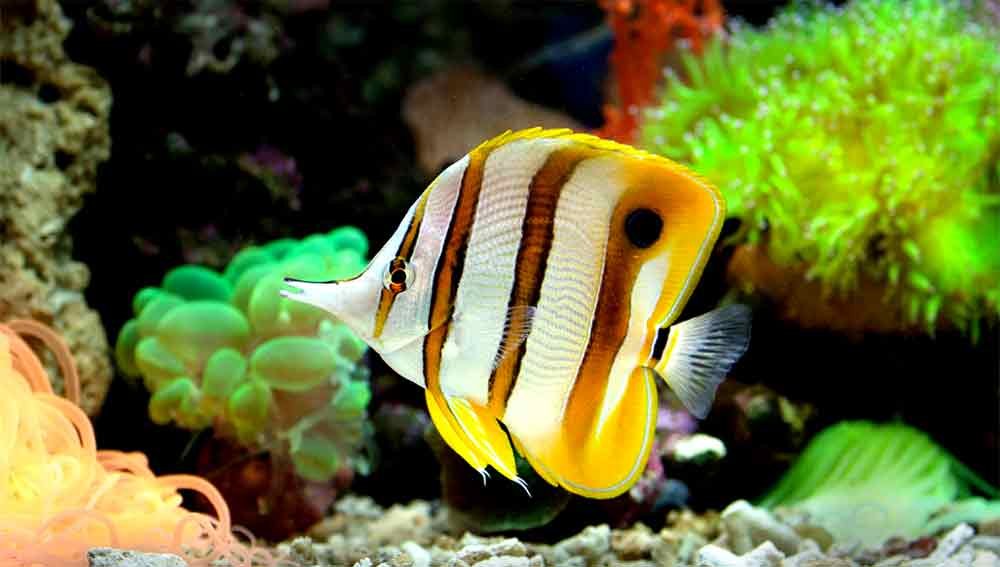Best 12 saltwater aquarium fish and 4 Avoid for beginners.
I am an experienced Aquarium keeper I keep saltwater fish, freshwater fish, and turtles. By raising various species of saltwater fish, I have gained the knowledge and skills necessary to ensure their behavior, feeding habits, and well-being.
Keeping the best saltwater aquarium fish can be a challenge for beginners, but choosing the right saltwater fish can result in a beautiful and healthy aquarium.
Here, for the benefit of beginners, I have described some saltwater fish that are relatively easy to keep in an aquarium so that beginners can care for them without difficulty.
I have also listed some saltwater fish that are not suitable for beginners.
Best 12 saltwater aquarium fish
1. Ocellaris Clownfish

- Scientific Name: Amphiprion ocellaris
- Common Name: Clownfish, Ocellaris Clownfish, Common Clownfish
- Family: Pomacentridae
- Color Form: Orange, red-brown, white
- Care Level: Easy
- Behavior: Peaceful
- Swimming Level: Mid and top-level
- Optimal pH: 8 to 8.4
- Breeding: Egg layer
- Origin: Indo-Pacific
- Adult Size: 3 to 4.3 inches
- Minimum Tank Size: 20-22 gallons for one Ocellaris Clownfish
- Water Temperature: 75°F – 80°F
- Water Hardness: 10 to 12 dGH
- Diet: Omnivores
- Average Lifespan: 12 to 15 years
2. Kole Yellow Eye Tang

- Scientific Name: Ctenochaetus strigosus
- Common Name: Kole Tang, Goldring Bristletooth
- Family: Acanthuridae
- Color Form: Yellow, gold, brown, blue
- Care Level: Easy to moderate
- Behavior: Semi-Aggressive
- Swimming Level: All levels
- Optimal pH: 8 – 8.4
- Breeding: Egg layer
- Origin: Indian Ocean
- Adult Size: 7 to 8 inches
- Minimum Tank Size: 70 gallons for one fish
- Water Temperature: 75°F – 82°F
- Water Hardness: 8-12 dGH
- Diet: Omnivore
- Average Lifespan: 5+ years
3. Gem Tang

- Scientific Name: Zebrasoma gemmatum
- Common Name: Gem Tang, Jewelled Tang
- Family: Acanthuridae
- Color Form: Black, White, Yellow
- Care Level: Easy
- Behavior: Semi-Aggressive
- Swimming Level: Bottom
- Optimal pH: 8.1-8.4
- Breeding: Do not breed Gem Tangs in aquariums
- Origin: Western Indian Ocean, around South Africa
- Adult Size: 6.7-8.7 inches
- Minimum Tank Size: 180 gallons
- Water Temperature: 72-78°F
- Water Hardness: 8-12 dKH
- Diet: Herbivores
- Average Lifespan: 10 to 15 years
4. Pakistan Butterflyfish
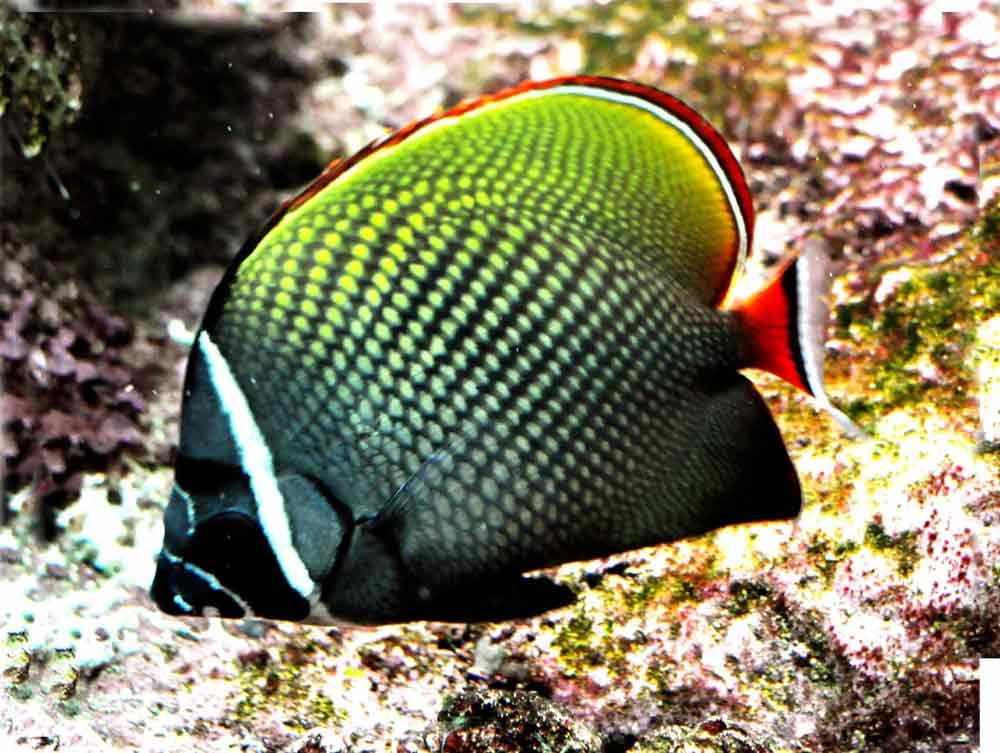
- Scientific Name: Chaetodon collare
- Common Name: Redtail Butterflyfish
- Family: Chaetodontidae
- Color Form: Black, Red, Tan, White
- Care Level: Intermediate
- Behavior: Peaceful
- Swimming Level: All levels
- Optimal pH: 8.1-8.4
- Breeding: Do not breed Pakistan Butterflyfish in aquariums
- Origin: Pacific Ocean from Pakistan and Sri Lanka
- Adult Size: 7-8 inches
- Minimum Tank Size: 120 to 125 gallons
- Water Temperature: 72-78°F
- Water Hardness: 8-12 dKH
- Diet: Carnivore
- Average Lifespan: Up to 10 years
5. Splendid Dottyback
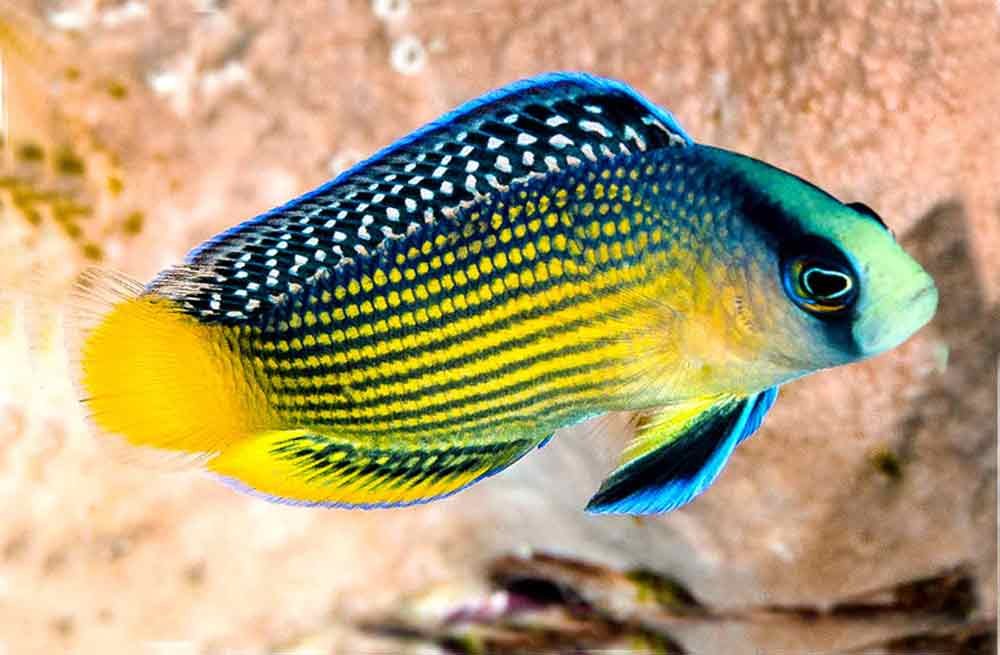
- Scientific Name: Manonichthys splendens
- Common Name: Splendid Dottyback
- Family: Pseudochromidae
- Color Form: Blue, Pink, White, Yellow
- Care Level: Easy
- Behavior: Semi-aggressive
- Swimming Level: Mid to bottom
- Optimal pH: 8.1-8.4
- Origin: Indonesia
- Adult Size: 3-4 inches
- Minimum Tank Size: 25 to 30 gallons
- Water Temperature: 72-78°F
- Water Hardness: 8-12 dKH
- Diet: Carnivore
- Average Lifespan: 5-7 years
6. Raccoon Butterflyfish

- Scientific Name: Chaetodon lunula
- Common Name: Raccoon Butterflyfish, Raccoon Coralfish
- Family: Chaetodontidae
- Color Form: Yellow-orange, with black and white patches
- Care Level: Easy
- Behavior: Peaceful
- Swimming Level: All levels
- Optimal pH: 8.2–8.4
- Breeding: Egg layer
- Origin: Indo-Pacific
- Adult Size: Up to 8 inches (20 cm) in length
- Minimum Tank Size: 75 gallons for one Raccoon Butterflyfish
- Water Temperature: 74°F – 80°F
- Water Hardness: 5–15 dGH
- Diet: Omnivore
- Average Lifespan: 5–7 years
7. Yellow Tang

- Scientific Name: Zebrasoma flavescens
- Common Name: Yellow Surgeonfish, Yellow Hawaiian Tang
- Family: Acanthuridae
- Color Form: Yellow
- Care Level: Easy to moderate
- Behavior: Semi-Aggressive
- Swimming Level: Deep level
- Optimal pH: 8 to 8.4
- Breeding: Egg layer
- Origin: South Pacific
- Adult Size: Up to 8 inches
- Minimum Tank Size: 55 gallons for one
- Water Temperature: 75°F – 82°F
- Water Hardness: 8 – 12 dGH
- Diet: Herbivore food, dried and frozen
- Average Lifespan: 30 years in the wild, 10 in captivity
8. Six-Lined Wrasse
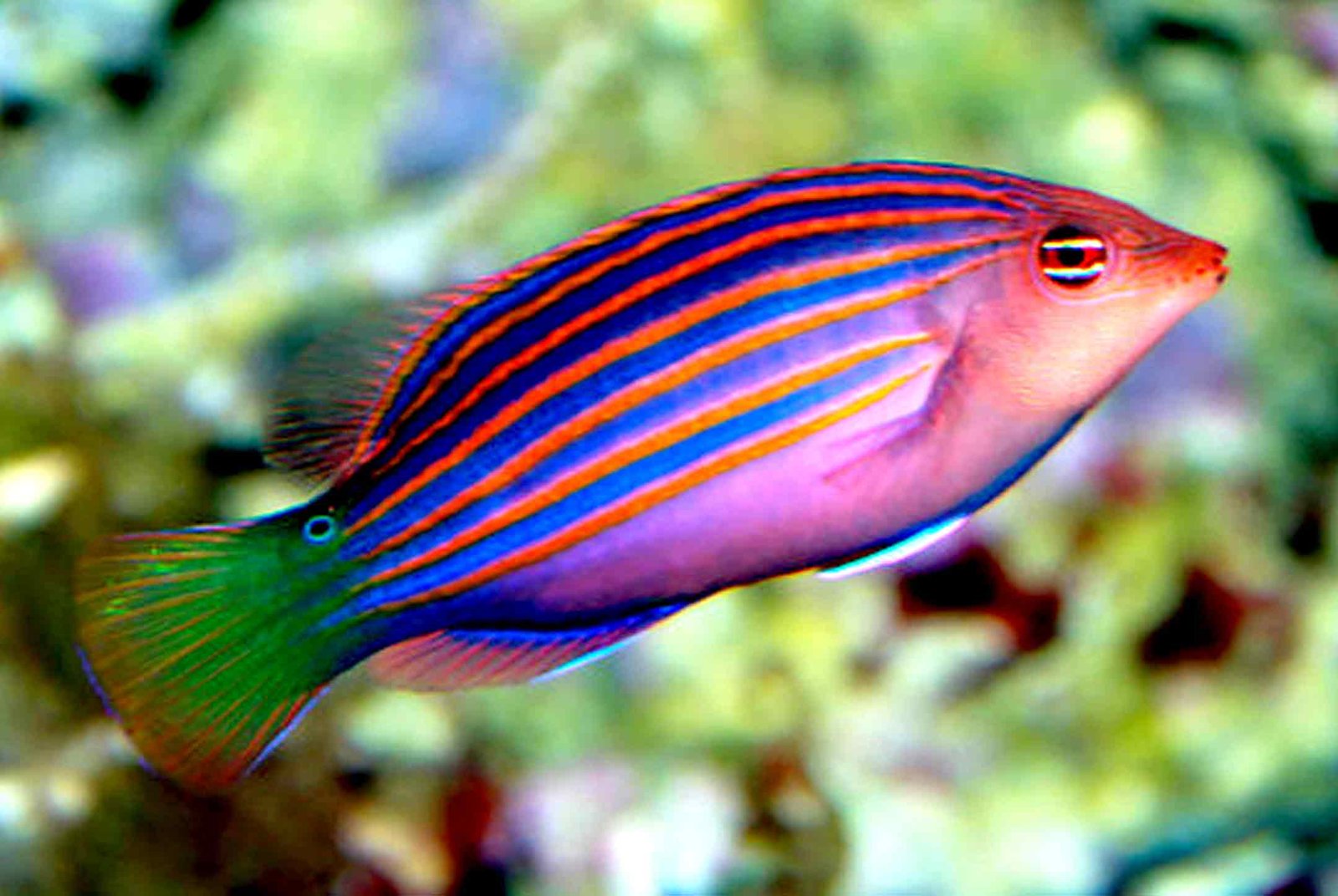
- Scientific Name: Pseudocheilinus hexataenia
- Common Name: Six Line Wrasse, Six Stripe Wrasse, Six Bar Wrasse
- Family: Labridae
- Color Form: Bright bluish-purple
- Care Level: Easy
- Behavior: Semi-aggressive
- Swimming Level: Mid to bottom
- Optimal pH: 8.1 to 8.4
- Breeding: Egg layer
- Origin: Fiji and Indo-Pacific
- Adult Size: 3 inches
- Minimum Tank Size: 30 gallons
- Water Temperature: 75°F – 82°F
- Water Hardness: 8 to 12 dKH
- Diet: Carnivore
- Average Lifespan: 4 to 6 years
9. Purple Tang

- Scientific Name: Zebrasoma xanthurum
- Common Name: Purple Tang, Yellowtail Tang, Yellowtail Surgeonfish
- Family: Acanthuridae
- Color Form: Blue to purple
- Care Level: Easy
- Behavior: Semi-aggressive
- Swimming Level: Bottom
- Optimal pH: 8.0 to 8.4
- Breeding: Do not breed Purple Tangs in aquariums
- Origin: Red Sea
- Adult Size: 10-12 inches
- Minimum Tank Size: 120 to 125 gallons
- Water Temperature: 75°F – 82°F
- Water Hardness: 8-12 dKH
- Diet: Frozen and dried food
- Average Lifespan: 12 to 15 years
10. Ruby Red Dragonet

- Scientific Name: Synchiropus sycorax
- Common Name: Starry Dragonet, Red Scooter Dragonet
- Family: Callionymidae
- Color Form: Red, White, Yellow
- Care Level: Intermediate
- Behavior: Peaceful
- Swimming Level: Bottom
- Optimal pH: 8.1-8.4
- Breeding: Do not breed Ruby Red Dragonets in aquariums
- Origin: Islands south to Australia
- Adult Size: 3-4 inches
- Minimum Tank Size: 30 gallons
- Water Temperature: 72-78°F
- Water Hardness: 8-12 dKH
- Diet: Carnivore
- Average Lifespan: 2 to 4 years
11. Heniochus Black and White Butterflyfish
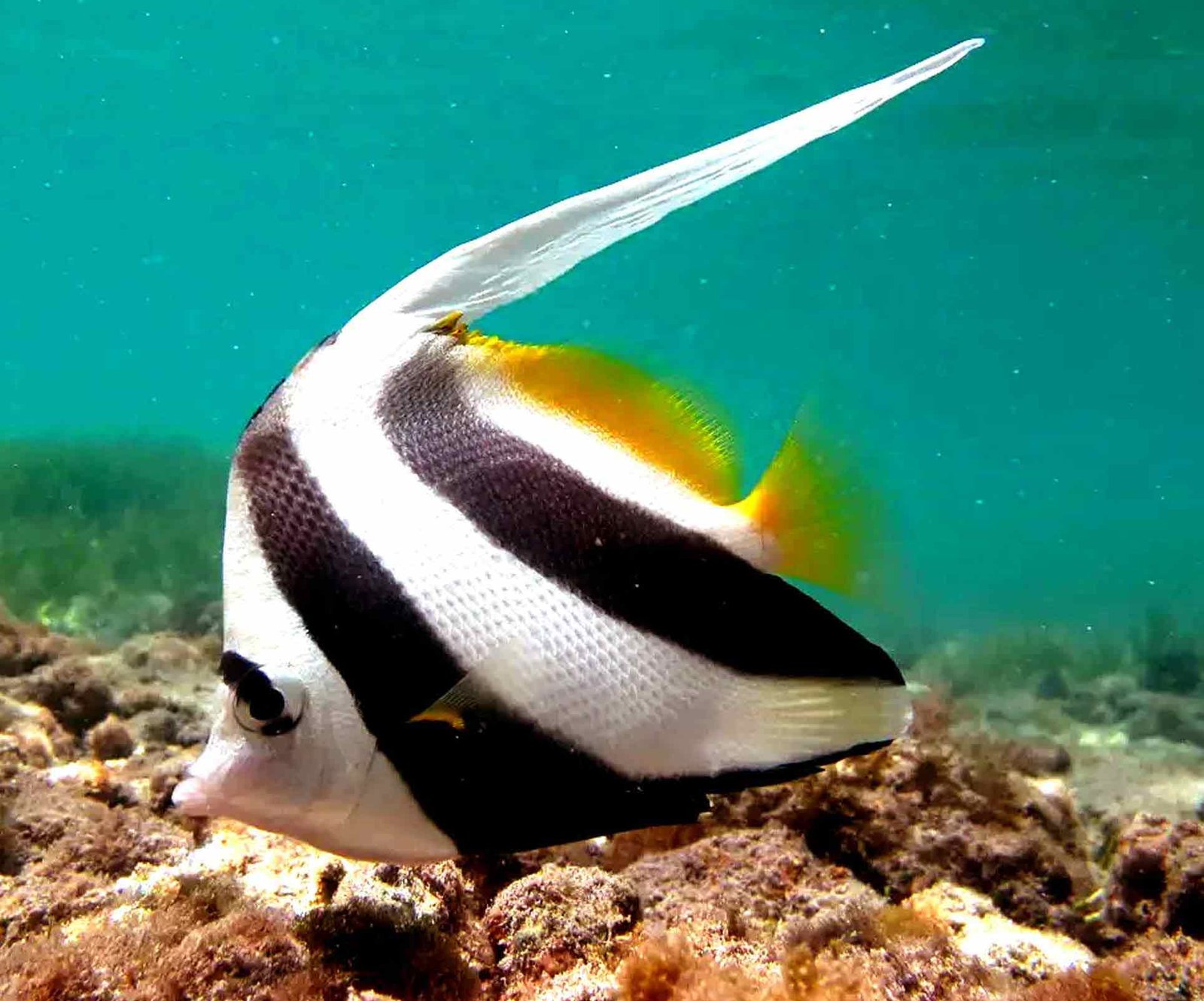
- Scientific Name: Heniochus acuminatus
- Common Name: Longfin Bannerfish
- Family: Chaetodontidae
- Color Form: Black, White, Yellow
- Care Level: Easy
- Behavior: Peaceful
- Swimming Level: Bottom
- Optimal pH: 8.1-8.4
- Breeding: Do not breed Heniochus Butterflyfish in aquariums
- Origin: Indo-Pacific
- Adult Size: 8-9 inches
- Minimum Tank Size: 120 to 125 gallons
- Water Temperature: 72-78°F
- Water Hardness: 8-12 dKH
- Diet: Omnivore
- Average Lifespan: 5 to 7 years
12. Flame Hawkfish
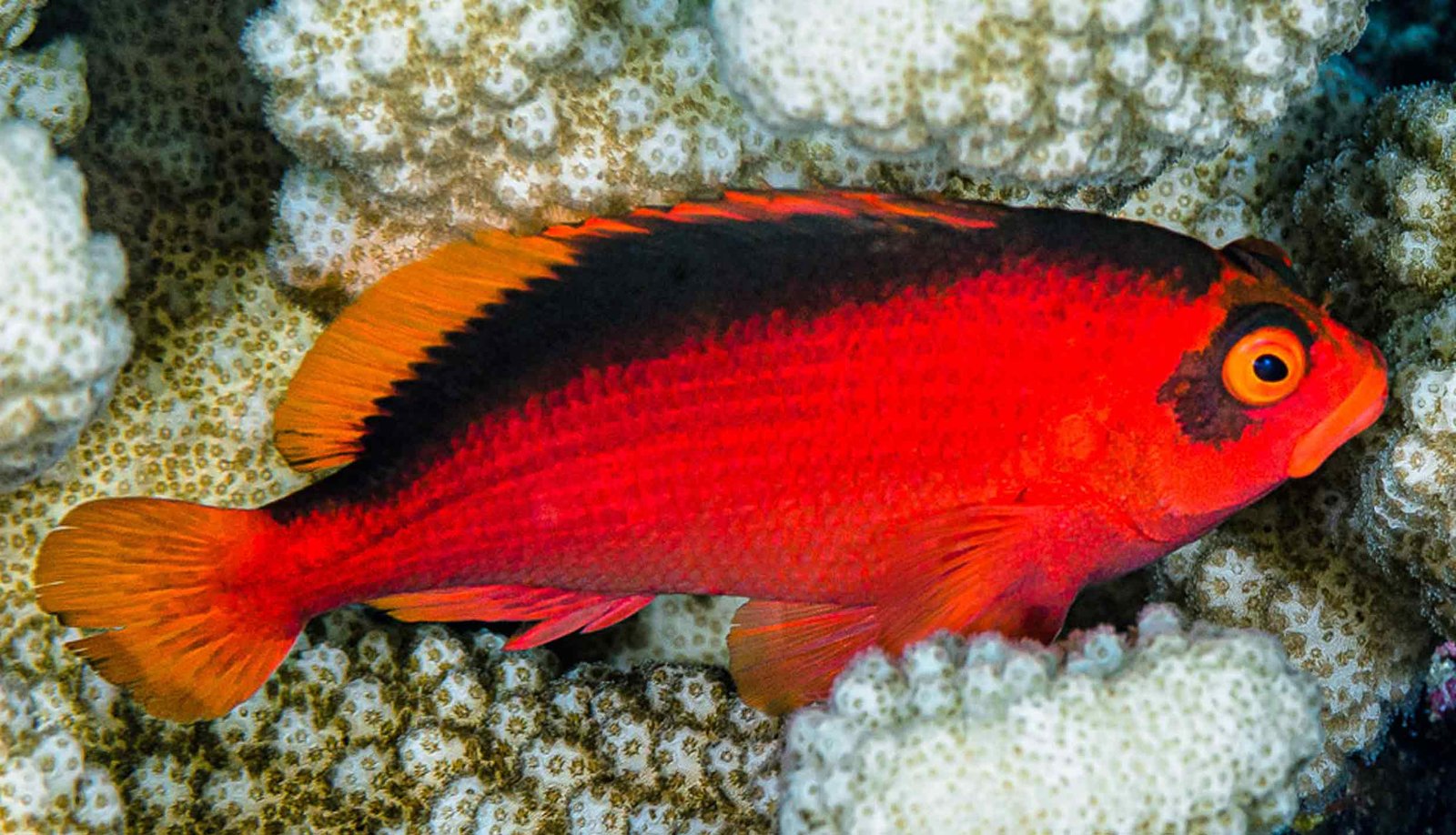
- Scientific Name: Neocirrhitus armatus
- Common Name: Red Hawkfish, Brilliant Hawkfish
- Family: Cirrhitidae
- Color Form: Red
- Care Level: Intermediate
- Behavior: Semi-aggressive
- Swimming Level: Bottom-dweller
- Optimal pH: 8 to 8.4
- Breeding: Egg layer
- Origin: Islands, Australia, South Pacific waters
- Adult Size: 3.5 to 4.5 inches
- Minimum Tank Size: 40 gallons for one Flame Hawkfish
- Water Temperature: 73°F – 80°F
- Water Hardness: 8 to 12 dGH
- Diet: Marine meats, live feeder shrimp
- Average Lifespan: 8 to 10 years
4 Fish New Aquarists Should Avoid
1. Cleaner Wrasse

Cleaner Wrasse
Food Issues:
In the wild, they survive by eating parasites and dead skin from other fish. This is their main food source.
There are not enough parasites or natural foods available in the aquarium. As a result, this fish can easily die of malnutrition.
Many Cleaner Wrasse are not accustomed to eating flakes, pellets, or other artificial foods, which makes them difficult to maintain.
Tank Size and Environment:
Cleaner Wrasse are active fish and need plenty of space to swim around. They usually require large tanks (75+ gallons), which can be difficult for beginners to manage.
They are peaceful fish and can become stressed when kept with aggressive or territorial fish. Beginners often add aggressive fish before they understand the compatibility of the fish.
Complex Care and Water Quality:
Cleaner Wrasse are very sensitive fish and require regular monitoring and control of water quality (pH, salinity, temperature). This can be challenging for beginners.
Keeping this fish requires the experience and expertise of an aquarist, which beginners usually do not have.
Dependence on Other Fish:
Dependence on Parasite Cleaning: Cleaner Wrasse survives by cleaning parasites from the bodies of other fish. If there are not enough fish in the tank or the fish are parasite-free, the Cleaner Wrasse will suffer from a food shortage.
Fish Numbers and Compatibility: Beginners often cannot keep enough or suitable fish in the tank, which makes it more difficult for the Cleaner Wrasse to survive.
Mandarin Dragonet

Mandarin Dragonet
Food Problems:
Mandarin Dragonets naturally survive by eating copepods and amphipods. These small invertebrates are their main food.
New or small aquariums usually do not have enough copepods or amphipods. As a result, this fish can easily die of malnutrition.
Many Mandarin Dragonets are not accustomed to eating artificial foods (such as flakes or pellets), which makes them difficult to maintain.
Tank Environment:
This fish requires a mature tank, where the natural population of copepods and amphipods is stable. This is not usually the case in new tanks.
Complex Care:
Water Quality: Mandarin Dragonets are very sensitive fish and require regular monitoring and control of water quality (pH, salinity, temperature).
Experience Required: Keeping this fish requires experience and skill on the part of the aquarist, which beginners do not usually have.
Ethical and Environmental Reasons:
Wildlife Conservation: Many Mandarin Dragonets are caught in the wild, which has a negative impact on the ecosystem. Their survival rate is low in aquariums, so collecting and selling them is ethically questionable.
Powder Blue Tang
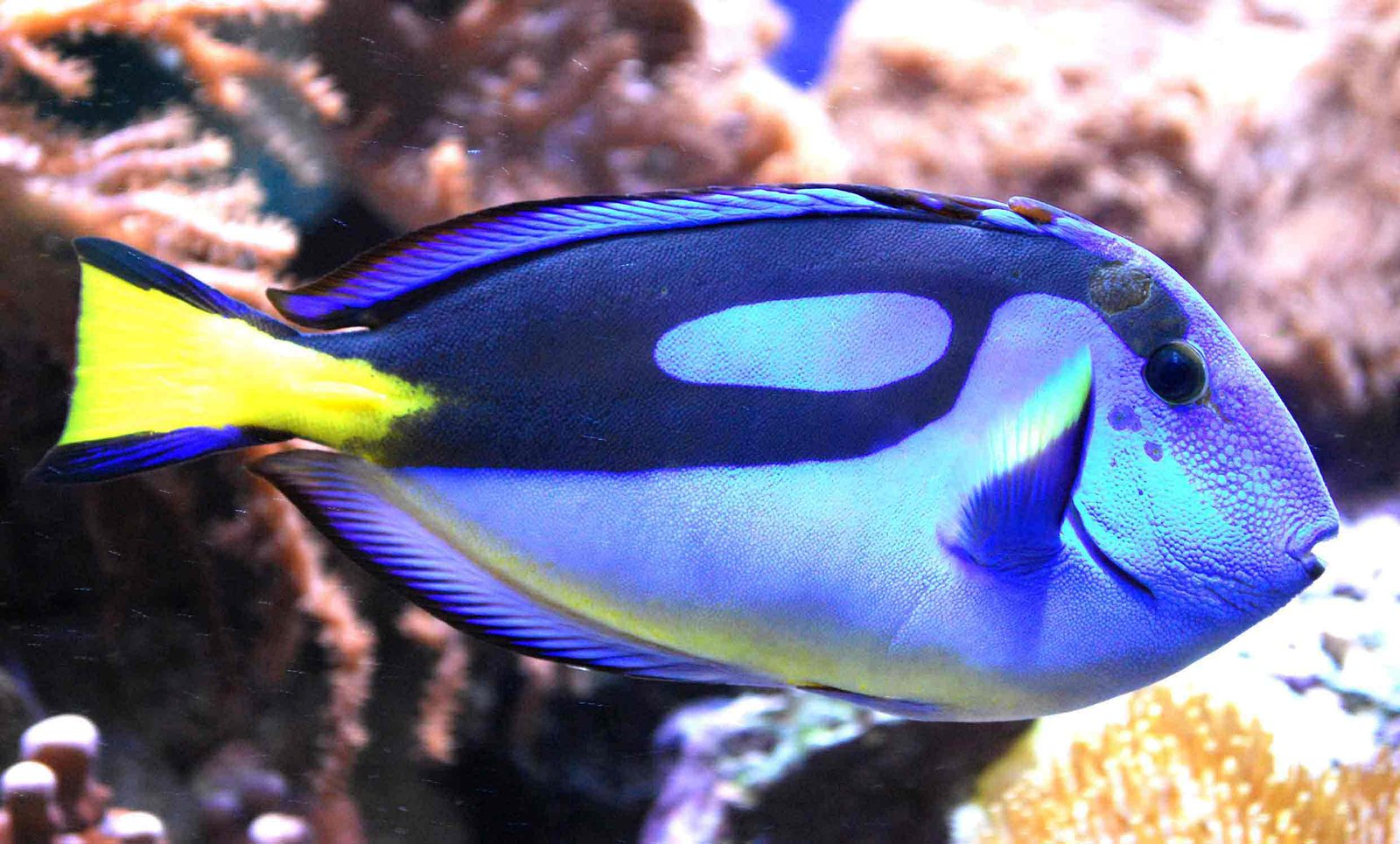
Powder Blue Tang
Requires Large Tank:
Powder Blue Tangs are large and active fish that swim quickly. They require a tank of at least 100-125 gallons or more.
Problems in Small Tanks: They can become stressed, sick, and aggressive if kept in small tanks.
Sensitive to Water Quality:
Powder Blue Tangs are very sensitive fish and require regular monitoring and control of water quality (pH, salinity, temperature, ammonia, nitrite, nitrate). Maintaining such stable and high-quality water can be difficult for beginners.
Disease Proneness:
Ich (White Spot Disease): Powder Blue Tangs are very susceptible to Ich disease, which is a common parasitic infection. This disease spreads quickly and can kill the fish if left untreated. Treating Ich disease is complicated and time-consuming, which can be difficult for beginners.
Aggressive Behavior:
Powder Blue Tangs can be territorial and aggressive towards other Tangs or similarly sized fish. They should be kept with peaceful fish, which can be challenging for beginners.
Special Diet Needs:
Powder Blue Tangs naturally eat algae. Adequate algae and algae-based foods should be provided in the aquarium. This may seem excessive to beginners.
Price and Availability:
Powder Blue Tangs are generally expensive fish and a risky investment for beginners.
This fish is not readily available everywhere, which can be an additional challenge for beginners.
Butterflyfish
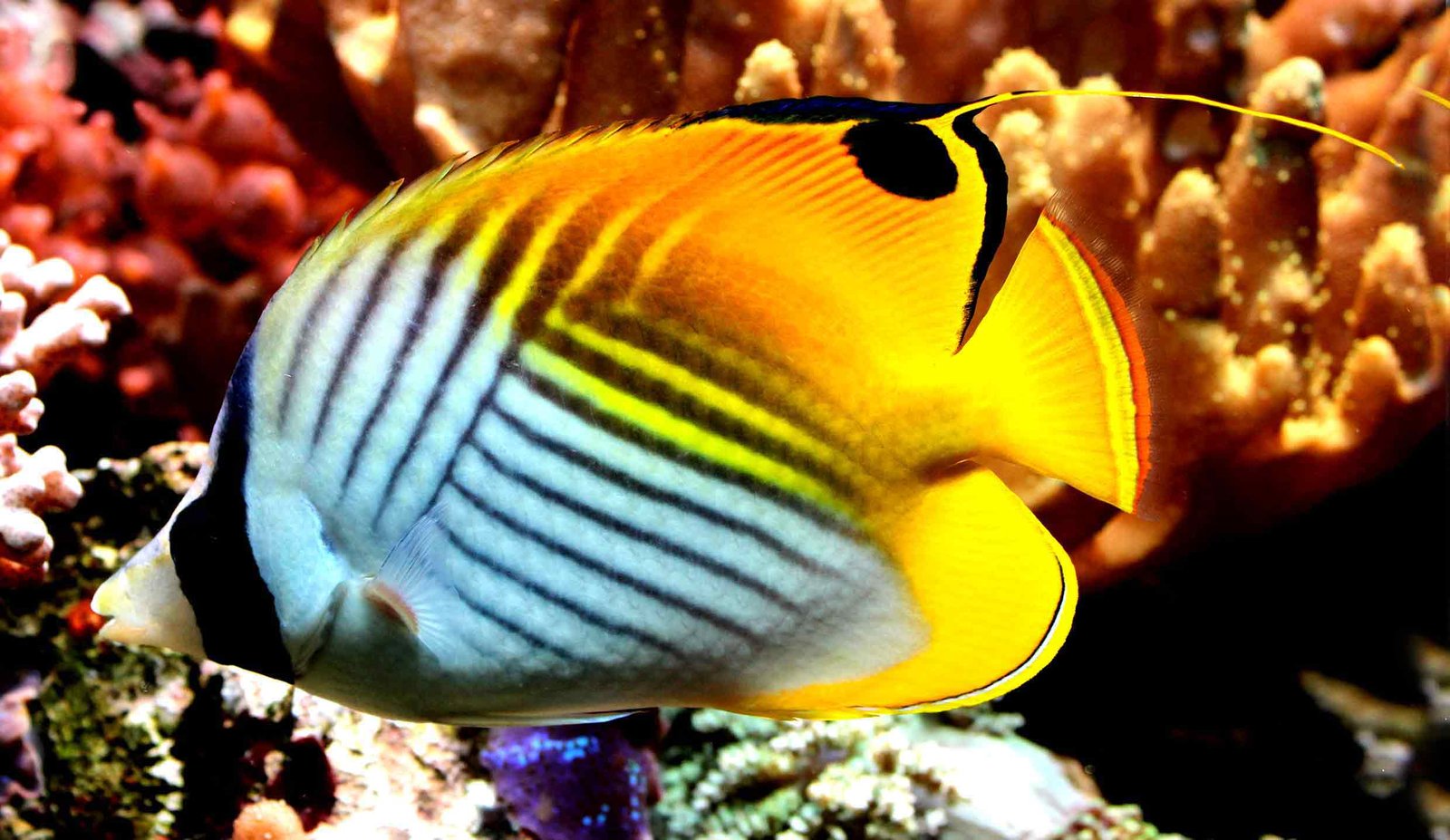
Butterflyfish
Special Diet Needs:
Butterflyfish species survive in the wild by eating only coral polyps, sponges, or algae. This specialized diet is very difficult for beginners to maintain in an aquarium.
Many Butterflyfish are not accustomed to eating artificial foods (such as flakes or pellets), which makes it difficult for beginners to sustain them. As a result, they can die of malnutrition.
Their feeding habits need to be maintained and monitored regularly, which is challenging for beginners.
Sensitive:
Butterflyfish are very sensitive fish and require regular monitoring and control of water quality (pH, salinity, temperature). They can become stressed and sick with even the slightest changes.
Disease Prone: They are very susceptible to diseases, especially Ich and other parasitic infections.
Large Tank Needs:
Butterflyfish are active fish and need plenty of space to swim around. Large tanks (100+ gallons) are usually required.
Many Butterflyfish eat coral, so they should not be kept in reef tanks. They should be kept in fish-only tanks.
Behavioral Issues:
Territorial and Aggressive: Some Butterflyfish species can be territorial and aggressive, especially with other fish of the same species.
Coexistence with Other Fish: They do not get along well with other peaceful fish, especially small or unruly fish.


